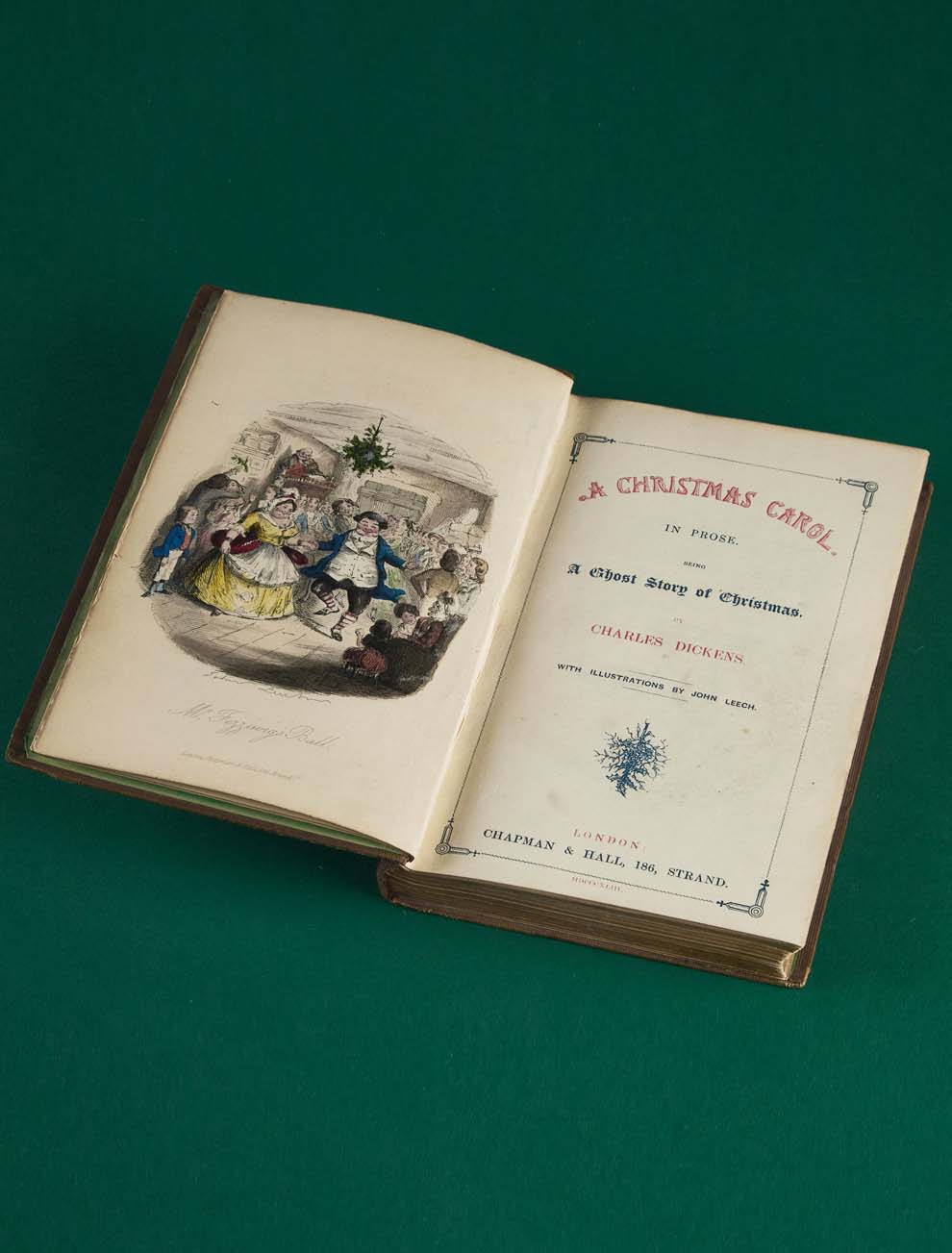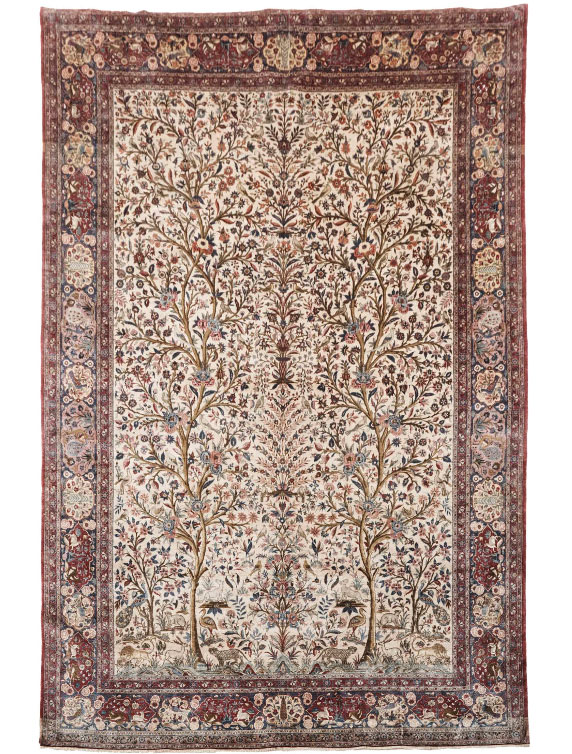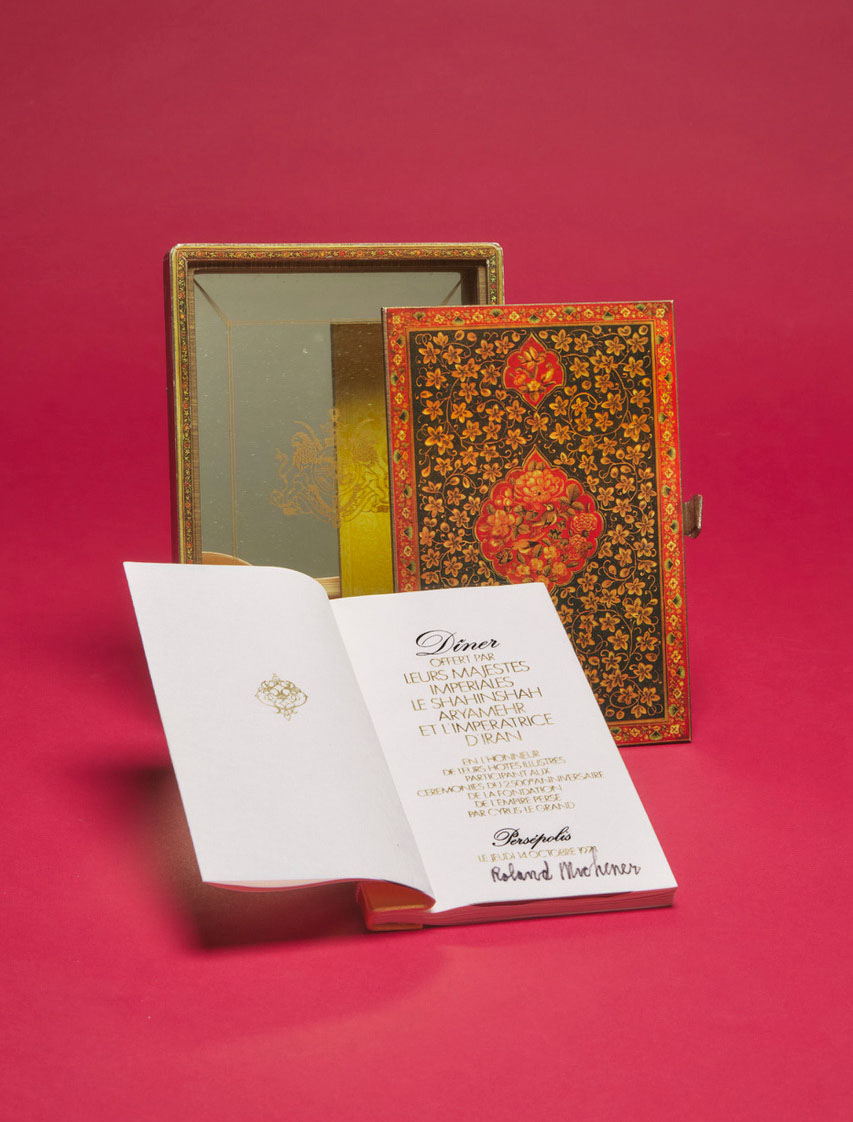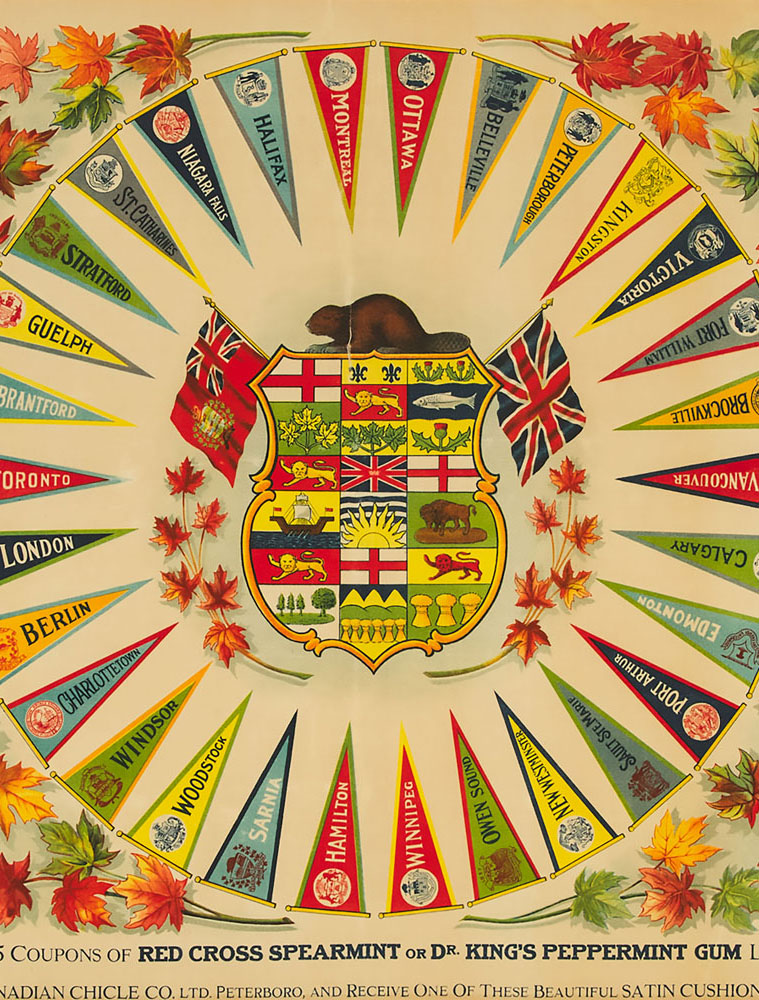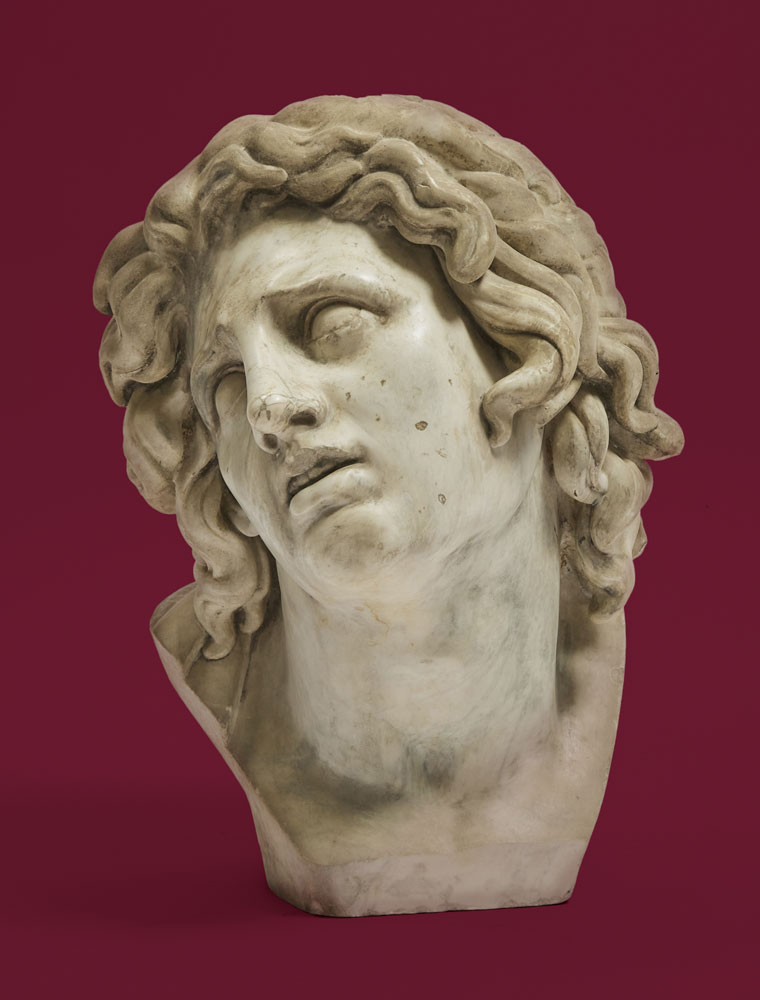From a fossilized 11,000,000 year old skull of a sabre-toothed big cat to a Roman sarcophagus fragment, weaponry, scientific instruments, rare books and cultural artefacts, our always-fascinating Cabinet of Curiosities auction features nearly 300 lots sure to pique your interest. While each lot merits its own feature, Senior Specialist Sean Quinn selected three items to spotlight.
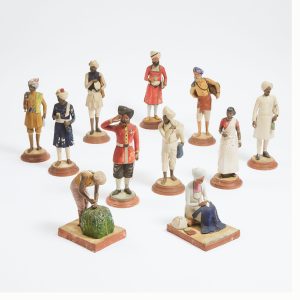
LOT 58 – Group of Eleven East India Company School Painted Terracotta Figures, Lucknow, India, late 19th century
A fusion of British and Indian styles, “Company School” (Kampani Qalam) refers artwork created by Indian artists in the 18th and 19th centuries that had been commissioned by members of the British East India Company. The Sarmaya Museum notes the limitations of the term “Company School,” which encompasses artworks of great breadth, writing that “it would be like referring to Italy’s Renaissance art as the Medici School—it evokes the identity of the patron but gives you no idea of the larger themes animating the works or the brilliant artists who gave it expression.”
As the East India Company expanded its presence in India, greater numbers of officers and their families moved to the region, many of whom became patrons of the arts. Artists flocked to British outposts, finding new employment in the absence of traditional Indian-backed patronage. Many of them had been trained in the Mughal style, an aesthetic which prioritized plant life and the observance of the natural world, which is reflected in the lush greenery and floral themes often found in paintings from that period. Refinement and pleasure—both courtly and aesthetic—were also central concerns. This style was adapted to meet European interests and desires, producing romanticized artworks about India’s flora, fauna, people, architecture and landscape.
Lot 58, eleven terracotta figures, belong to a type originating from Krishnagar, a village near Calcutta where the East India Company was headquartered. The Villages of Hatwa, Datan, Muzaffar-pur, Dacca, Burdwan, and later, Lucknow and Poona followed suit, producing highly naturalistic sculptures which acted as souvenirs for Western patrons. Earliest examples date to the 1820s, made for an era without photography. It has been noted that these figures drew their inspiration from 18th and 19th Century Neopolitan creche figures.
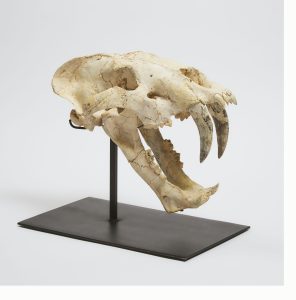
LOT 107 – Large Sabre Tooth Cat Skull, Central Asia, Late Miocene Sub-Epoch, 11.63-5.333 MYA
Among the largest sabre-toothed cat skulls ever to be brought to auction, lot 107 belongs to a large male Machairodus palanderi, the second-largest sabre-toothed cat species of all time—even larger than the well-known Smilodon fatalis bones recovered from the La Brea Tar Pits in Los Angeles.
Machairodus palanderi was indigenous only to Asia, though its cousins have been found in Europe, Africa and North America. Though they resembled present-day big cats, no real descendants of the sabretooth are alive today. Sabretooths were muscular and heavy, with a short tail: instead of the stalking and chasing strategies of contemporary cats, Machairodus palanderi would wait to ambush their prey. Though this might suggest a solitary life, Machairodus palanderi is believed to have been a pack hunter, travelling the Late Miocene savannas.
Famous for their massive protruding canines—lot 107’s measures over four inches—there are several species of sabre-toothed predators. The University of California, Berkeley, notes that “the sabertooth morphology has appeared several times during the history of the mammals. Saber-toothed members of the Carnivora, (the mammalian order that contains cats, dogs, bears, weasels, and others) appeared independently at least twice. Saber teeth evolved both among the true cats, or the family Felidae (these saber-toothed cats are sometimes classified in a separate subfamily of cats, the Machairodontinae) and within the Nimravidae (an extinct carnivore family that was related both to the true cats and to the civets and mongooses). The Hyaenodontidae, a family of the extinct mammalian order Creodonta, also included saber-toothed members. Even saber-toothed marsupial “cats” or thylacosmilids inhabited South America from the upper Miocene to the late Pliocene.”
Scientists have come up with a few hypotheses as to the purpose of Machairodus palanderi’s sensational teeth, with some suggesting they were used to hold on to prey, while others suggest they were used to deliver a killing stroke. The most common theory posits that the teeth would have been used to make a major wound—which would become fatal—so that the sabre-toothed predator could simply wait for their prey to die.
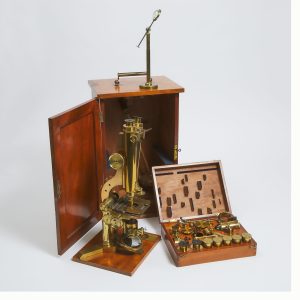
Estimate $2,000-$3,000
LOT 48 – Smith & Beck, London, Lacquered Brass ‘Best No. 1’ Compound Binocular Microscope Outfit, c.1870
While the microscope—in some form or another—had been in use for hundreds of years, the mid-19th century was an exciting time for medical equipment and science in general. Earlier microscopes used a single lens, which didn’t enable magnification much more than a hand-held magnifying glass. In the late 16th century, spectacle makers Hans and Zacharias Janssen invented the compound microscope, which used multiple lenses to increase magnification. By putting a lens at both the top and bottom of the microscope’s tube, magnification could be multiplied. That said, these early compound microscopes were only able to magnify from 3x-9x, and were also not able to increase resolution, meaning that images were blurry and obfuscated. Steven Ruzin, a microscopist and curator of the Golub Microscope Collection at the University of California at Berkeley, notes that as a result, no significant scientific breakthroughs resulted from the use of the microscope for about 100 years.
By the end of the 1600s, microscopes were able to multiply up to 270x, spurring new scientific discoveries. Robert Hooke famously published Micrographia in 1667, which depicted hundreds of drawings of cells—a term Hooke coined—as seen through his microscope.
The 19th century say vast improvements to microscope technology, both in terms of clarity and the degree to which subjects could be magnified. Objective and condensers were built with optical correction in mind. Combined with advancements in machine tooling, well-crafted instruments became available. Michael W. Davidson of the Florida State University writes that “high-end microscopes [of the 19th century] performed better than many student models produced today.”
To read more about the history of microscope invention, the Smithsonian Magazine has an excellent article, available here.
ABOUT THE AUCTION
Representing a range of fascinating items, our Cabinet of Curiosities auction is available for online bidding from May 21-26, 2022.
We invite you to browse the full catalogue.
Please contact us for more information or to schedule a preview appointment.
Related News
Meet the Specialist

Sean Quinn
Senior Specialist, Clocks, Sculpture & Lighting





